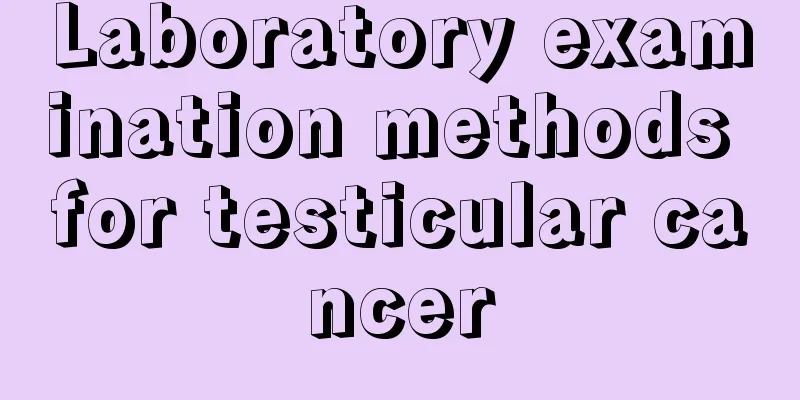Laboratory examination methods for testicular cancer

|
Testicular cancer can be well treated if it is discovered early, but some patients do not pay attention to the treatment of this disease, which leads to the development of the disease to the late stage and the loss of the best treatment period. In fact, testicular cancer patients should go to the hospital for examination and treatment in time after the symptoms appear. So what are the specific laboratory examination methods for testicular cancer? Mainly serum β-HCG, AFP and LDH detection, these serum tumor markers are of great significance for treatment, follow-up and prognosis. β-HCG is synthesized by syncytiotrophoblast cells, with a serum half-life of 24-36 hours. It is elevated in the blood of patients with choriocarcinoma, embryonal carcinoma and spermatogonia. Elevated AFP is seen in pure embryonal carcinoma, teratocarcinoma, yolk sac tumor and mixed tumors, but pure choriocarcinoma and pure spermatogonia do not synthesize AFP. The serum half-life of AFP is 5-7 days. Elevated LDH can be seen in testicular tumors, but its sensitivity and specificity are not high. The degree of increase can be used to indicate the severity or extensiveness of the lesion, and the increase after treatment can also indicate recurrence. The time required for LDH LDH to return to normal can predict the patient's prognosis, especially for medium-risk patients. The longer it takes to return to normal, the worse the prognosis. Scrotal B-ultrasound can help confirm the mass in the testicle and is the preferred method in clinical practice. Abdominal and pelvic CT is used to understand the situation of lymph node metastasis, and chest plain film and CT are used to evaluate the presence of lung metastasis. Therefore, abdominal/pelvic CT is an important basis for staging and grading of all patients. In the follow-up after treatment, positron emission tomography (PET) has high sensitivity and specificity for the evaluation of residual tumors after treatment. Although a puncture biopsy of a testicular tumor can confirm the diagnosis, there is a risk of tumor implantation and metastasis, so transscrotal testicular puncture biopsy should be prohibited. Differential diagnosis The differential diagnosis of testicular cancer includes epidermoid or dermoid cysts in the testicle, testicular torsion, epididymitis, epididymo-orchitis, and hydrocele. The incidence of testicular cancer is relatively high in life, and it is also very harmful to the health of testicular cancer patients, so we must be more vigilant about testicular cancer and do a good job in preventing testicular cancer. We should also pay attention to diet in life. |
<<: Is the cure rate of testicular cancer high?
>>: Surgical treatment of testicular cancer
Recommend
The difference between donating platelets and donating blood
Our unit and work organization often organize blo...
Legs reflect systemic illness, legs feel cold, kidney yang deficiency
In traditional Chinese medicine, a headache canno...
Prostate cancer recurrence indicators
Prostate cancer recurrence indicators? For variou...
What are the surgical methods for colorectal cancer obstruction
What are the surgical options for colorectal canc...
What to add to red bean and coix seed to remove moisture
Red bean and barley porridge has a certain dehumi...
How long does it take to get pregnant after breast cancer
How long does it take to get pregnant after breas...
Tips on how to remove lip hair
Many women may have this problem of having lip ha...
What should I do if I have a lot of dreams when I sleep? Friends who are under great pressure should pay attention
Dreaming is an indispensable part of people's...
What eye drops are used for itchy eyes_Eye drops for itchy eyes
Many people often feel itchy eyes in life, but th...
What are the adverse reactions of Shapuaisi Eye Drops?
Normally our eyes often need to come into contact...
Is a pituitary tumor serious?
The severity of a pituitary tumor depends on the ...
Does small cell lung cancer have a high mortality rate?
Is the mortality rate of small cell lung cancer h...
Is ALT 96 serious?
Alanine aminotransferase exists in the liver, hea...
Is gallbladder cancer contagious through saliva?
Over the past many years, the question of whether...
Will pancreatic cancer recur 14 years after surgery?
Will pancreatic cancer recur 14 years after surge...









